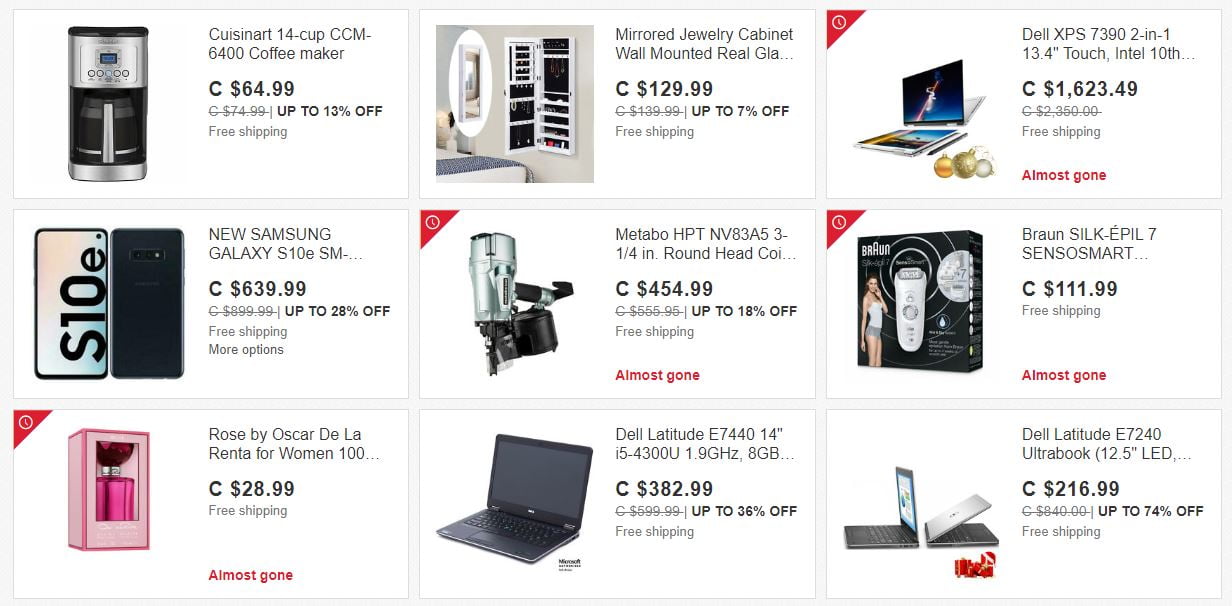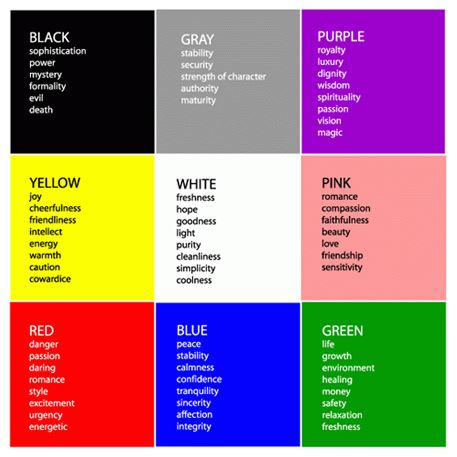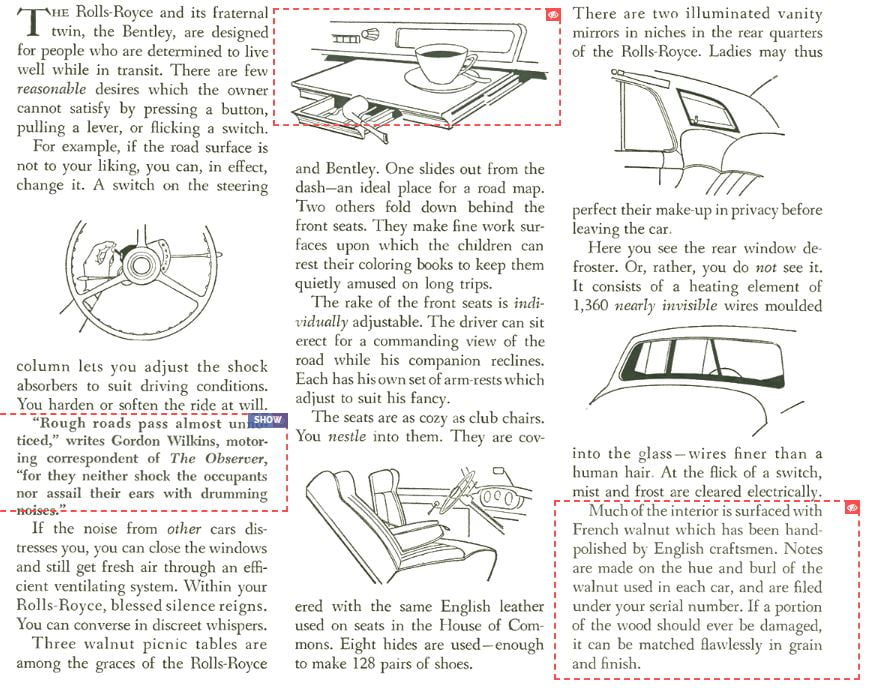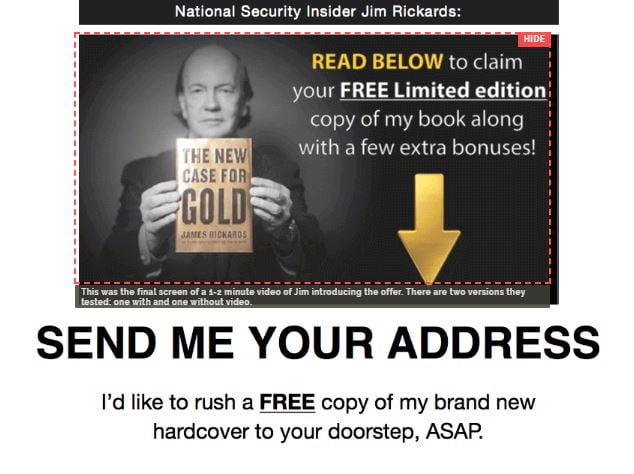What’s one of the main goals of copy?
To persuade.
And, as the Oxford Dictionary would describe it, persuade means to:
Cause (someone) to believe something, especially after a sustained effort; convince.
So, by the end of any copy, you want the reader to be fully convinced that your offer is the coolest thing since sliced bread.
But, here’s the thing: there’s no magic bullet.
You need an amazing product, service, or offer first.
Then, you write copy that shows in the fullest detail why it’s so amazing.
You’re not trying to make a product appear better than it is; rather, copy convinces readers to see its true awesomeness.
Here’s how to write persuasive copy that achieves this.
What is Persuasive copywriting?
Let’s get back to the basics for a second.
Copywriting is the art and science of writing sales copy.
This is a swanky way of saying business material.
Sales copy is primarily advertisements. Think sales letters, direct mail, landing pages, websites, and so on.
Ultimately the goal of sales copy is to drive revenue, generate leads, or increase brand awareness.
Naturally, persuasive copywriting is the component of sales copy that persuades readers to take action…
Maybe that’s ordering a product, signing up to an email list, or entering their information into a form. It depends on the exact campaign.
No need to bore you with a long definition, though. Let’s get into some effective persuasive copywriting techniques next.
Persuasive copywriting techniques
These are some of the most effective persuasive copywriting strategies you can use.
They are backed by psychology and science—the hallmark of any good writing technique.
Try them out for yourself and be creative. Put your own twist on them and use them in unique combinations.
1. You’re not writing who you think you’re writing for
It’s very easy to make up a magical character in our heads when we’re writing copy.
You may think you’re writing a sales letter to a 40 year old man whose day job is as an accountant, and he wants to earn passive income.
When, in fact, you’re not writing to that person at all.
John Doe—the 40 year old accountant from Boston—doesn’t see himself as that character.
He sees himself as a man who loves spending time with kids, playing in a local baseball league on the weekends, and hitting the gym.
John has a good sense of humor, enjoys craft beer, and lives an organized lifestyle.
Writing for a generic buyer persona won’t get you anywhere.
John, your real customer, won’t resonate with the material. Nor will his friends. Nor will his family.
When his son sees an advertorial online that is geared toward his dad, he won’t share it. It’s too generic and doesn’t remind him of the real person.
Next time you’re writing, write to John.
What I mean by this is that you need to have a clear ideal audience in mind. I’m talking about what they do on the weekends, their values, beliefs, etc.
Copy becomes much more authentic, personal, and emotional when you do this.
And, that’s how you persuade.
It’s also the reason that most organizations rank experience management as their highest priority.

Customers demand tailored experiences.
Every segment is vastly different in terms of wants, needs, and values.
Sending everyone the same copy is a surefire way to receive yawns and discontent.
Study the target audience through market reports, case studies, whitepapers, and other freely available data.
Heck, send out questionnaires, perform focus groups, or do primary studies of your own if possible.
Use the findings to write copy that resonates with a hyper-segment on a deep level. That’s much better than blasting everyone with the same material.
It’s also what helps businesses to drive real results with sales copy.
2. Timely offers create urgency
Imagine the following two scenarios from your customer’s perspective.
The first: They visit your landing page the offer is permanent. They can come back at any time to receive it.
The second: The offer on the landing page only lasts 48 hours. Once that time has passed, it’s gone forever!
Needless to say, customers will feel much more urgent in the second scenario.
This is because they must take action now, or they’ll miss out.
That’s called fear of missing out, or FOMO for short in psychology.
John M. Grohol, Psy.D. stated this in regard to fear of missing out:
The fear of missing out (FOMO) has become pervasive in society. Teens and adults text while driving, because the possibility of a social connection is more important than their own lives (and the lives of others). They interrupt one call to take another, even when they don’t know who’s on the other line (but to be honest, we’ve been doing this for years before caller ID). They check their Twitter stream while on a date, because something more interesting or entertaining just might be happening.
But, let’s go a step deeper.
What is urgency, really? It’s a form of fear.
And, fear is built into all of our DNA and the reptile part of the brain.
It’s what keeps us moving. It keeps us pushing.
That’s why when a reader absorbs urgent copy, it makes them fear they’ll miss out on something they may never experience again.
Look at how this travel company states the last time of booking and how many users are viewing each deal:

People interested in one of these hotels will feel a fire under their butt as others may take the deal before them.
That brings me to my next point.
3. Create a drought
Another form of urgency is achieved through scarcity.
This is when there’s a limited supply or lack of any given product.
That also implies that if customers don’t take action sooner, others may take it before them, and there will be none left!
That’s why things that have a limited quantity are always more appealing.
Consider the cookie jar experiment run by Worchel and other researchers back in 1975. (Not the actual name, but it sounds funnier.)
They took a total of 200 female undergraduates and had them rate the attractiveness of cookies that were either in abundant or scarce supply.
In one case, the jar was full. They could’ve eaten until their stomachs exploded.
In the second, the jar barely had any cookies left.
Guess which cookies were rated as more desirable.
The scarce jar!
Why does this happen? Many reasons, including:
- Scarcity creates exclusivity: Customers who have a scarce item feel like they’ve achieved exclusive access, and they own something many others don’t. It appeals to the ego and identity. Think VIP areas, special airport lounges, etc.
- Scarcity implies value: If everyone else has been buying it to the point of there being very little left, it must be amazing! (What your customers are thinking.)
- Scarcity makes people feel powerful: Customers own something most do not. This can make them feel special, unique, and part of the clubhouse. Think Gucci, BMW, or Louis Vuitton.
Countdown deals like what eBay does on their website are one of the best ways to create scarcity. However, it needs to be accompanied by urgent copy.

That’s why they use the “Almost gone” warning on products that are almost out of stock.
Note how it is also in red text, which is proven to push people to take action and is associated with strong emotions.

You can imply scarcity by:
- Highlighting low inventory/stock. “Only 5 left in stock” is an example.
- Pushing limited offers, especially during the holidays.
- Displaying real-time purchases of other customers.
- Creating limited edition products like luxury brands do.
4. Elaborate on their pain points
Why do people buy a product?
To solve a problem, right?
That’s why your persuasive copy needs to clearly identify the pain point the customer is experiencing and explain how the product will solve it.
This goes back to the first point that I taught you, which is knowing the customer like the back of your hand.
Otherwise, your copy will drain your marketing budget and generate little to no results.
Pain points are on a spectrum, too.
Someone in need of a new t-shirt isn’t experiencing as bad a problem like someone whose toilet is leaking and flooding their house.
One is low-grade, while the other is a pull-your-hair-out and need-it-solved-now kind of issue.
The first step is to ask yourself, “What problem is my customer experiencing for them to need my product or service?”
Think deep. Think emotional. Write down as many ideas as possible.
For instance, why do people use my copywriting courses? Some reasons include:
- They don’t have the skills or knowledge to write effective copy/content themselves.
- They’ve been burned by poor writers in the past and need a professional to rely on.
- Their colleagues are bugging them to start blogging and generating inbound leads, thus, they need a writer like me.
- Landing pages, product pages, etc., aren’t delivering the performance they want.
- They know their existing copy or content sucks.
- The list goes on…
I can then engineer copy, proposals, and phone calls to revolve around these things while positioning myself as the fix.
Look how a debt consolidation company does this on its homepage:

They mention the customer’s problem: dealing with debt and getting finances in better shape.
Then, they offer a confidential and personal consultation to become debt-free.
5. Take a note from neuro-linguistic programming
Neuro-linguistic programming, or NLP for short, is the study of how language affects the brain.
Because, as a copywriter, you know that words have the power to influence and persuade.
It goes a step deeper, though.
NLP techniques are based on neuroscience, psychology, and related studies.
They give any standard copywriting method a run for its money.
One specific NLP strategy to consider is framing.
This is the process of strategically putting a positive or negative emphasis on a point to create a certain response.
Both are effective, but you need to treat them like a loaded gun.
Wording something positively will make customers favor it and look at it in a better light.
On the flip side, negatively framing something can make customers feel urgency, irritation, and similar emotions.
Let’s take these two headline examples into consideration:
- Stop Spending So Much on Healthcare – Try NeraHealth Insurance
- Save $480/year By Using NeraHealth Insurance Today
The first is negatively framed. It’s telling readers to stop spending extra money on healthcare.
This could work as it can make customers feel stressed that they’re overspending.
However, the second is positively framed by stating the exact dollar amount customers will save.
Depending on the emotion you’re trying to elicit and how your brand presents itself will change how you frame copy.
6. Tell them clearly what do next
Customers are smart. In fact, they’re more resourceful than ever.
Consider smartphones, review sites, and social media. They have all of the information in the world at their fingertips.
Nonetheless, they still need some guidance.
You’re the pro about whatever you’re writing about, after all.
That’s why clear instructions and calls to action are so effective at persuading.
Telling customers what action to take next—such as calling a number, visiting a website, or likewise, takes thinking out of the equation.
They can head towards checking out or the next important action faster and with fewer issues.
The most effective way to do so is with a call to action.
See how a local digital agency in my area uses several CTA’s on its homepage?

There are calls to action for viewing their portfolio, requesting a quote, and more.
Similarly, it’s effective to present clear step-by-step instructions if the process is more complicated.
That’s why their quote request form provides all of the necessary information required to work with them.

Otherwise, leads would be confused about the process and what’s needed from them to begin working together.
7. Let testimonials speak for themselves
Social proof is everything.
It’s easily one of the most powerful ways to convince, persuade, and convert.
As a matter of fact, 92% of consumers read online reviews before making a purchase.
This is because of a beautiful thing called groupthink.
If many other people are enjoying a product and leaving good reviews, it makes us much more likely to purchase it ourselves.
Why is this?
Simply because the other customers have saved us time by doing the research, buying the item, and using it to come to a conclusion.
After all, groupthink is an evolutionary mechanism to help us save time and make better decisions. It’s not so bad!
That’s why you need to make sure testimonials are clearly presented on sales letters, landing pages, and other places where conversions matter the most.
8. Paint a picture of using your product
Have you ever thought long and hard about imagination for a second?
It’s crazy!
You can literally see, feel, and smell something without actually experiencing it.
Visualizing also creates strong emotions because your brain can’t tell the difference between reality and imagination or dreams.
Interesting, huh?
For example, have you ever woken up from a nightmare sweating or out of breath? Your brain reacts that way just in case it’s real to protect you.
It’s also why promoting readers to imagine themselves using your product is so persuasive.
It lets them experience what it’d be like to use a product through their own emotions, imagination, and ideas.
This is the ultimate form of persuasion because you present the canvas, and they paint the picture.
You can do so by writing incredible amounts of detail as David Ogilvy did in this ad for Rolls Royce:

Every section touches on the details, materials, and features that make up the car.
This helps readers picture seeing it in person.
What seals the deal is Ogilvy mentioning situations like “If the noise from other cars distresses you, you can close the windows and still get fresh air through an efficient ventilating system.”
This further paints a picture in the reader’s head, helping them imagine the luxurious feeling being in a Rolls Royce would offer.
9. Predict the reader’s objections ahead of time
Here’s when you need to tune into your inner psychic and the powers of the universe…
Or just read market reports and study customers…
Yeah, let’s just do that.
Because customers are going to have objections about a product’s price, features, return policy, and more.
Think of this as speed bumps toward generating a sale.
They can zoom 100km/h towards the checkout or continually slow down because they have to consider objections.
The first is better.
Look at this sales page from Agora Financial:

It’s an offer for a book teaching American’s how to invest in gold.
As you could imagine, readers are going to have some questions and objections like:
- How do you properly invest in gold?
- Is it a safe investment?
- How much money can you make?
- Etc.
This is precisely why Agora presents proof to resolve these objections along the sales page in this section:

It shows readers that gold has remained a steady investment over the last 100 years despite economic crashes and collapses.
I recommend asking, “What questions or objections will my customers have?” as you write copy.
The key is to ask yourself this for every major section of the material, too.
This is because not every customer will object to the same thing.
For some, it’s the price. For others, it’s specific features.
Then, back up every point with data, testimonials, and proof to alleviate the tension.
This will help them feel better about what you’re promoting and the idea of purchasing it.
10. Create an FAQ section or page
I love this persuasive copywriting technique for sales pages, sales letters, and similar material.
An FAQ (frequently asked questions) section or pages answer questions that customers commonly ask about a product, service, or something else.
They’re extremely convenient and effective because consumers can quickly learn about policies, shipping, returns, etc., while you help them move closer to the sale with less friction.
For example, here’s an FAQ section that I included at the end of the sales page for my Sell Like Hell copywriting course.

I know from speaking with many of my students that they want to understand what my mentoring entails, what the refund policy is, how long the course takes, and what happens after they purchase it.
So, I bundled up those questions into a quick FAQ at the end.
11. Appeal to the customer’s ego
Be honest.
We all want certain things based on our ego…
It might be wealth, good looks, health, an attractive partner; you name it.
Usually, there is some form of ego that goes into our wants, needs, desires, and goals.
This is especially the case when it comes to buying products, services, and consumerism in general.
After all, deep-down primal desires are what push us to take action and purchase products.
You can use this to your advantage by leveraging it as a persuasive copywriting technique.
Here’s how…
Firstly, make sure you understand the target audience like the back of your hand.
Read Reddit threads, snoop on social media, reverse engineer online reviews and read whitepapers. Anything you gotta do to get into their head.

This will help you determine what they want and why they want it.
For example, some people only want to build a six to seven-figure business so they can show it off, prove people wrong, and live a luxurious life.
I’m not saying any of these things are wrong, but they mostly derive from ego, self-image, establishing a certain identity, etc.
Continuing with that example, you could write sales copy around:
- Building a business that will allow you to travel the world, drive exotic cars, and eat at the fanciest restaurants.
- Show all of your family and friends who doubted you were wrong and that you were right the entire time about your business idea.
- Be seen as a leading entrepreneur in your industry that can teach others how to be successful.
That brings me to my next idea.
12. Use bold statements and fascinating tidbits
The reality is that very few people will read your sales copy without objecting or thinking, “Hmm, I don’t know if I believe that.”
You need to make your points concrete. Believable. Authoritative.
How do you do that?
Through data and science.
Keep with me.
You see, one of the best ways to back up claims you make is to source relevant statistics, graphs, charts, and studies.
This makes you and your ad more credible and also helps persuade people.
They help you make bold statements (that you can back up) while fascinating the reader into reading the rest of the advertisement.
For example, imagine I told you that copywriting could make you millions of dollars and leave you hanging…
You might think that’s cool but would be itching to hear more. How do you achieve that income? Who are people earning that much?
Imagine instead that I brought up legends like Clayton Makepeace who have regularly made millions in royalties since the ’90s. I show you examples of his work, link to his website, embed an interview, etc.
Suddenly my point becomes more convincing, right?
That’s why I want you to research examples, science, and data every time you’re writing a campaign.
Heck, I go over why data helped me so much when writing this Forbes FinTech magazine ad in one of my YouTube videos.
One approach I like to use is searching Google for a keyword followed by:
- Case studies
- Stats
- Data
- Scientific studies
- Trials

This will give you heaps of resources to cite. Go through the results and find examples that can help back up your points and ideas.
Persuasive copywriting example
While I’ve shown you examples of persuasive copywriting for individual techniques and strategies, I want to cover a few more in-depth.
Stefan Georgi’s RMBC Method course page
Stefan Georgi is a legendary copywriter who has generated over $700 million for his clients.
And, yes, you read that number right.
He sells an online course called The RMBC Method.
RMBC stands for research, mechanism, brief, and copy.
It’s his secret formula for writing high-performing sales letters in as little as two days.
Nonetheless, his sales page is a baller and a great example of persuasive copywriting.
Let’s begin with the above-the-fold section. A five-minute video explains everything you need to know about the course, what you get, and how it will benefit you.
The headline makes the results of the course and how life-changing it is by claiming this method took Stefan from living in a trailer to generating over $700 million.

Secondly, Stefan uses heaps of social proof by providing testimonials from successful students.

These talk about their good experiences with the course and how game-changing it has been. Seeing as 92% of consumers read online reviews before purchasing products, this is a huge part of persuasion.
Thirdly, he builds up credibility and trust by citing numbers about the results he’s driven for clients, including tens of millions of dollars per month.

Finally, Stefan provides 20+ bonuses that make the value of his program absolutely insane.
If someone is on the fence about purchasing it, how can you say no when you’re getting so many extra things for free?

Seeing as his sales letter is 15,000+ words; we could be here for days analyzing it. However, those are some of the main ways he persuades readers.
Wrapping up persuasive copywriting
Excellent copy persuades. It convinces.
But, not with shady techniques and snake oil.
Rather, copy should persuade customers to see how truly life-changing a product, promotion, or service really is.
That’s why you have to keep in mind they don’t know what you know.
Persuasive copy needs to present all of the facts, benefits, and features of an item—all while smoothing objections and creating an emotional impact.
Enroll in my copywriting courses and apply the takeaways below to achieve that:
- Don’t write for generic buyer personas. Research the customer’s beliefs, values, lifestyle, and more. This helps create the most genuine and impactful copy.
- Create a sense of urgency to push customers to take action sooner.
- Position an offer as scarce to make it appear high value and sought after.
- Elaborate on customers’ pain points to make them relate to the copy while positioning a solution.
- Frame certain parts of copy as positive or negative depending on the strategic response you’re trying to achieve
- Use calls to action and step-by-step instructions to make the sales process as easy as possible.
- Leverage testimonials as social proof.
- Use as much detail as possible to paint a picture in the reader’s mind.
- Brainstorm what objections customers would have and resolve them ahead of time.














